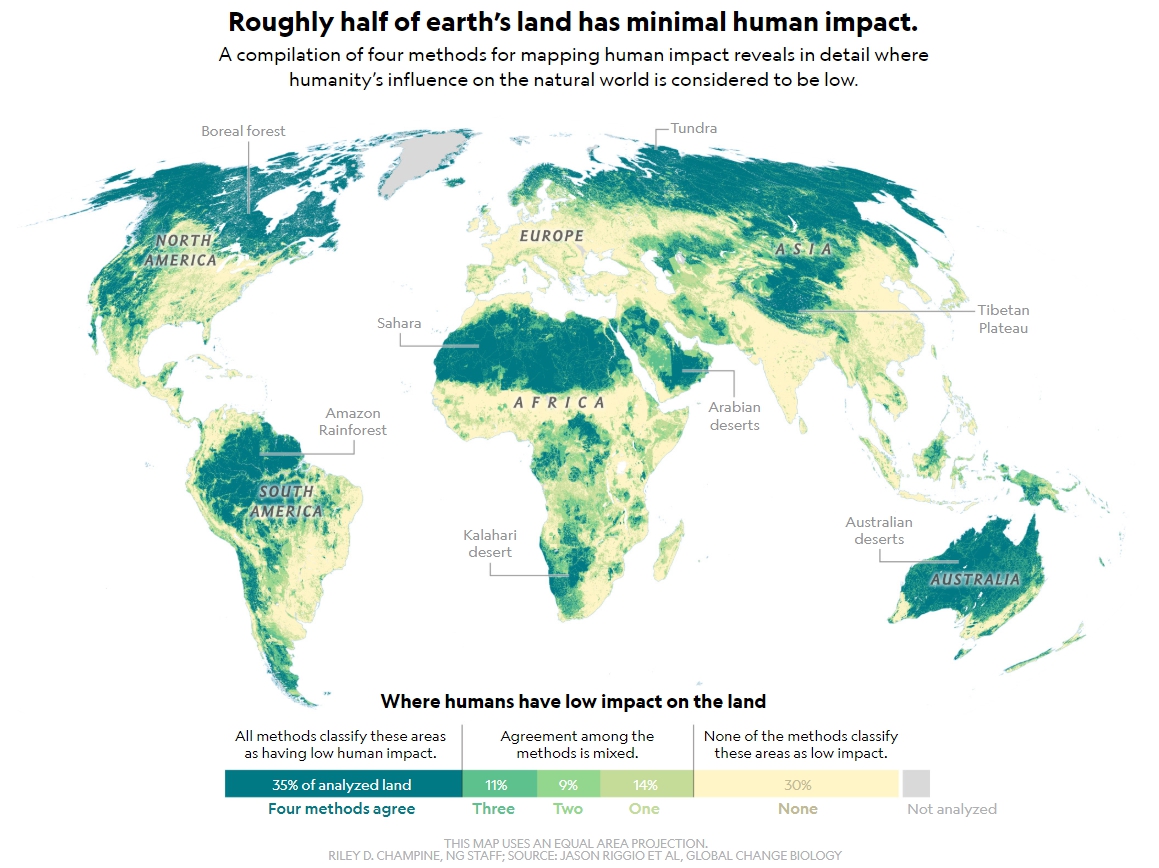博文
“广义胡焕庸线”的 National Geographic 图示
||
“广义胡焕庸线”的 National Geographic 图示
一、广义胡焕庸线(胡焕庸线的一般化推广)
2014-12-24 真傻提出:
“类似胡焕庸线,非洲、南美洲、美国、欧洲等处也有类似的植物生长的边界线,即广义的胡焕庸线。在农牧业为主的社会,植物生长的情况,与人口密度的分布有一定的关系:人必须一定量的水、粮食和蔬菜。 ”
http://blog.sciencenet.cn/blog-107667-853546.html
在 2015-11-23 19:42 进一步说明:
“人口分布,直接受到水资源等客观条件的制约。因此,植物的繁茂状态,是人类存在的先决条件,但不一定有人(如太冷)。在天气较暖的地区,这两种分布应该有较强的相关性。”
二、美国“国家地理National Geographic”的直观证据
地球上哪里没有人(This map shows where on Earth humans aren’t),这幅照片明显地给出了“广义胡焕庸线”:

https://www.nationalgeographic.com/science/2020/06/where-people-arent/
这是裁剪出的我国“胡焕庸线”:

对照:美卫星的植物碳汇图

https://www.sciencemag.org/news/2014/12/satellite-captures-glowing-plants-space
参考资料:
[1] 胡焕庸线_百度百科
https://baike.baidu.com/item/%E8%83%A1%E7%84%95%E5%BA%B8%E7%BA%BF
[2] 中国气象数据网,2019-04-23,这条线为何被称为“最牛分界线”?
https://www.sohu.com/a/309859242_99963284
[3] 北京山东同乡沙龙,2017-06-18,原来每个国家都有一条“胡焕庸”线
https://www.sohu.com/a/149896721_163277
[4] National Geographic,2020-06-05,This map shows where on Earth humans aren’t
A new map shows where people have the lowest impact—but are those the best places to protect?
https://www.nationalgeographic.com/science/2020/06/where-people-arent/
https://migrate.readersupportednews.org/news-section2/318-66/63361-this-map-shows-where-on-earth-humans-arent
[5] Eric Hand,SCIENCE,2014-12-18,Satellite captures glowing plants from space
https://www.sciencemag.org/news/2014/12/satellite-captures-glowing-plants-space
相关链接:
[1] 2017-08-26,“广义胡焕庸线”的存在被证实!
http://blog.sciencenet.cn/blog-107667-1072822.html
[2] 2014-12-22,胡焕庸线:清晰可见(美卫星的植物碳汇图)
http://blog.sciencenet.cn/blog-107667-853546.html
[3] 2015-10-01,胡焕庸线:尚未突破
http://blog.sciencenet.cn/blog-107667-924668.html
感谢您的指教!
感谢您指正以上任何错误!
感谢您提供更多的相关资料!
https://blog.sciencenet.cn/blog-107667-1237712.html
上一篇:[崩溃] 只有“民科”才能成就最高的人类科学进步?
下一篇:恭喜杨学祥老师“科学网”上开博13年!
